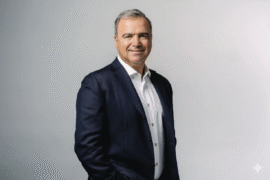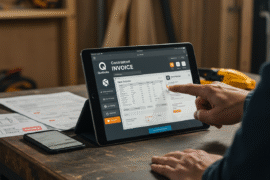This article may contain references to products or services from one or more of our advertisers or partners. We may receive compensation when you click on links to those products or services. Nonetheless, our opinions are our own.
The information presented in this article is accurate to the best of our knowledge at the time of publication. However, information is subject to change, and no guarantees are made about the continued accuracy or completeness of this content after its publication date.
More and more young people want to get rich and have financial freedom. Teenagers can take a big step toward long-term financial health by learning the basics of investing. Learning about investments at a young age does more than just help you grow; it also teaches you discipline, patience, and how money works.
Teens who start investing early have time on their side. A more confident way to handle money comes from compound interest, regular saving habits, and slowly getting used to financial risks. Teenagers can make smart decisions about their money if they know how investments grow. This is true whether they are saving for college, their first car, or to build a foundation for adulthood. This detailed breakdown shows the tools, strategies, and kinds of accounts that can help young investors along the way.
- Highlights
- The Value of Early Investments
- Preparing to Invest: What Teens Need to Know
- Beginner’s Guide to Investing for Teens
- Navigating the Investment World Under 18
- Investment Options Available to Teens
- Strategies for Successful Investing as a Teen
- Conclusion
- Frequently Asked Questions
- Recommended Reads
Highlights
- Start Early for Maximum Growth: If you start investing when you are a teenager, you can take advantage of compound interest. This helps you build a lot of wealth over time.
- Custodial Accounts: A minor can invest with support from a parent or guardian. A custodial account lets them keep their investments until they reach the legal age.
- Understand Your Risk Tolerance: Think about how much risk you can handle before you invest. Begin with small amounts and gain experience gradually.
- Explore Different Investment Options: Get to know different types of investments like stocks, bonds, mutual funds, and ETFs. Make sure these options match your goals.
- Seek Guidance: It is smart to ask questions. Learn from other investors and consult financial advisors. This can help you make good financial decisions.
The Value of Early Investments
Think about a snowball rolling down a hill. As it rolls, it picks up more snow and becomes bigger fast. Investing is similar, especially if you start early. Time is key. The sooner you invest, the more time your money has to grow. This could lead to larger returns in the future. We refer to this as the time value of money. It shows why it is wise to start investing when you are young.
It’s not just about time; it’s about the power of compounding. When you reinvest your earnings, such as interest, dividends, or profits, those earnings can earn even more. This creates a snowball effect that can boost your wealth over time. The compounding effect is very strong. Each dollar you invest as a teen can grow to be much more valuable by the time you retire.
The Power of Compound Interest for Teens
Think of compound interest as a superpower for your money. It helps your money grow quickly over time. You earn interest not only on what you put in but also on the interest you have already earned. For example, if you invest $1,000 at a 7% interest rate, you make $70 in the first year. In the second year, you earn interest on both the $1,000 and the $70. This cycle continues.
The true benefit of compound interest shows up over time. If you put $1,000 into an investment each year with a 7% interest rate, you could have about $14,000 after 10 years. In 30 years, that amount can grow to more than $94,000!
This growth shows how powerful compound interest can be. When you invest steadily for a long time, it can turn small and regular investments into large savings for the future. For teens, understanding this money tool now can help them create a secure life later.
How Starting Early Affects Long-Term Wealth Building
Investing early is like planting a tree. The sooner you plant it, the stronger its roots will be, and it will produce more fruit. When you invest early, your money has more time to grow and adjust to market shifts. This is vital for creating wealth over time. If you begin young, even small amounts can turn into a big amount later. This helps you reach your financial goals faster.
Starting to invest early helps you build good money habits. These habits include saving money regularly and making smart choices. You begin to think about your future wealth. You also learn to manage the ups and downs of the market. Plus, you can see how helpful regular investing can be.
Building good habits when you are young is very helpful as you grow older. It helps you make good financial decisions. You also avoid common mistakes. Plus, you feel confident managing your money. This prepares you for a future where you have financial strength and independence.
Preparing to Invest: What Teens Need to Know
Before you start investing, it’s helpful to learn some basic things. This builds a strong foundation. When you understand the main ideas, you can make better choices and stay away from common errors.
To begin, learn some key financial terms. Look into stocks, bonds, mutual funds, and ETFs. It’s important to know what these investment options are and how they function. You also need to understand the risks tied to them. Having this knowledge will assist you in creating a solid investment strategy.
Basic Financial Literacy for Teens
Gaining financial literacy is like having a superpower. It helps you handle your money, make wise decisions, and reach your financial goals. The good news is that you do not need a finance degree to learn the basics of investing. It starts with simple yet essential ideas.
First, let’s understand what a savings account is. It’s not the same as an investment, but it helps you save money for investments later. It’s important to learn how interest works. Compound interest can help grow your savings, even in a savings account. You may want to look at high-yield savings accounts, too, as they can give you better returns.
Next, check out different investment options. Stocks let you own a tiny piece of companies that sell shares to the public. Bonds are loans you give to governments or businesses, and they pay you interest. Knowing the difference between these two basic asset classes can help you start your investment journey.
Setting Realistic Investment Goals
Think about going on a trip without knowing where you’re headed. You may get lost and feel like you have no purpose. This is similar to investing without clear goals. It can lead to confusion and bad decisions. To make your investing experience better and connect it with your dreams, start by setting clear and realistic investment goals.
What do you want from your investments? Are you saving for a car, college, or a house? First, know your financial goals. Then, write them down in order of how long you have to reach them. If you have short-term goals, choose investments that you can get to easily. For long-term goals, it’s best to pick options that let you use the power of compounding over time.
Lastly, think about your risk tolerance. How would you feel if your investment’s valuewents up and down? Knowing how much risk you can handle will help you pick investments that fit your comfort level and goals for the future.
Beginner’s Guide to Investing for Teens
Now that you know the basics, let’s outline the easy steps to start investing. Keep in mind that investing is not about getting rich quickly. It’s about making smart choices and sticking with them. Over time, this will help you grow your wealth slowly.
Investing is similar to building a house. You need a solid foundation first. Then, you add several layers step by step. A clear plan is also important for investing. It begins with gaining knowledge. After that, set your goals. Then, open your accounts and pick your investments. Lastly, keep managing your investments regularly.
Essential Tools and Resources for Teen Investors
Just like a carpenter needs good tools to build something strong, teen investors need the right tools and resources to learn about the stock market. Luckily, there are a lot of information and platforms that can help you on your investment journey.
First, you need to have a brokerage account. This is the account where you can buy and sell investments, such as stocks, bonds, and mutual funds. Many brokerage firms cann meet different needs. You might want to look into options like Fidelity Youth. This is made just for young investors.
Next, be sure to learn a lot. Websites like Investopedia have useful information. You can find definitions for important terms, lessons on different ways to invest, and the latest news on market trends.
Step 1: Educating Yourself on Different Types of Investments
The investment world is big and offers many choices. You can find options that fit your financial goals and risk tolerance. Before you start investing, it’s important to understand the different types of investments. This will help you find what works best for you.
First, know the difference between individual stocks and funds. When you buy individual stocks, you own a piece of a company. This can earn you money, but it can also be risky if the company performs badly. Funds, like mutual funds and ETFs, gather money from many investors. They invest in various assets. This helps lower risk and can lead to more stable returns.
Now, let’s look more closely at funds. An index fund is a great option for beginners. These funds follow a market index like the S&P 500. They cover a large portion of the market and usually have lower fees. Index funds are a hit with long-term investors who want a simpler way to invest.
Step 2: Understanding the Importance of Diversification
Think about putting all your eggs in one basket. If the basket falls, you lose everything. This idea relates to investing. Diversification means you spread your investments across different asset classes, industries, and places. Doing this helps lower your risk.
When you diversify, you help keep your portfolio safe. This means you do not depend on only one investment. For example, if you just invest in technology stocks and that market drops, your whole portfolio will feel the loss. But if you also put money into other sectors like healthcare or consumer goods, the fall in technology stocks won’t impact your entire portfolio as much.
Diversification is important for investors, no matter their age. It is particularly helpful for teens starting their journey in the market. A good mix of investments acts like a safety net. It helps protect against big losses and encourages growth in the long term.
Step 3: Creating a Budget for Investment
Investing does not require a lot of money to get started. The important thing is to start small and keep going. It is essential to create a budget just for your investments, even if they seem small at the beginning. This habit helps you build good financial habits early on.
To begin, keep an eye on your income and spending. If you get an allowance or work a part-time job, see how much money you can save for investments each month. Saving $10 or $20 can add up over time. This is even better when you consider compounding benefits.
If you don’t know how much money to invest, begin by using a small part of your income. You can gradually increase this amount as your finances improve. Remember, investing should work alongside your other financial goals. This means saving for short-term needs or handling expenses wisely.
Step 4: Selecting a Brokerage Account Suitable for Teens
When you pick a brokerage account as a teen investor, remember the special rules for minors. You can’t open a regular brokerage account until you’re 18. A custodial brokerage account is a good choice for you.
A custodial brokerage account is run by an adult, like a parent or guardian, for a child. The adult’s name stays on the account until the child is old enough. Once the child reaches that age, they will take full control of the account. This way, young people can begin investing early while getting help from an adult.
When you pick a custodial brokerage account, check the account fees carefully. Some brokers might charge monthly fees, trading fees, or fees if you don’t use the account. It’s smart to find custodial accounts with low or no fees, particularly for trades. This choice can affect your investment returns, especially if you start with a smaller amount.
Voted "Best Overall Budgeting App" by Forbes and WSJ
Monarch Money helps you budget, track spending, set goals, and plan your financial future—all in one app.
Get 50% OFF your first year with code MONARCHVIP
Investing can seem hard, especially if you are not yet 18. But you don’t need to feel stressed. Some rules and choices can help you begin safely and wisely. Understanding these rules will make your investment journey easier and more enjoyable.
One key part of investing when you are young is using custodial accounts. These accounts allow kids to invest in the market with an adult’s help. This way, you can follow the rules and learn about money. It also helps you to start building wealth early.
The Role of Custodial Accounts
Custodial accounts are very important. They let people under 18 invest money. These accounts need to follow state laws. An adult, usually a parent or guardian, sets them up for a young person. The account stays active until the young person becomes an adult, usually by 18 or 21.
There are two main types of custodial accounts. These are the Uniform Gifts to Minors Act (UGMA) and the Uniform Transfers to Minors Act (UTMA). Both types of accounts are quite alike. But UTMA accounts can hold more types of investments. These options include not only stocks and bonds but also other forms of investments.
In a custodial account, the custodian manages the account. They make investment decisions for the minor. The minor owns the assets in this account. They will take full ownership when they reach the age that state laws allow. It is also important to know that any money added to a custodial account cannot be taken back by the custodian.
Investment Options Available to Teens
Teens can explore several investment options with custodial accounts. This allows them to create portfolios based on their goals and risk tolerance. They can invest in stocks, bonds, mutual funds, and ETFs. These choices give a strong base for building wealth over the long term.
A great option is the Roth IRA. This account is great for saving for retirement. Teens who make money can also have a custodial Roth IRA. This type of account provides tax benefits. It lets your investments grow without being taxed. This can help you save money on taxes in the future, especially if you move to a higher tax bracket later.
Custodial accounts can have various types of investments. These might be index funds, target-date funds, or even real estate. You should understand the risks and rewards of each option. This will help you make smart choices for your long-term financial goals. It is a good idea to speak with a financial advisor who knows about custodial accounts.
Strategies for Successful Investing as a Teen
When you start investing as a teen, using smart strategies is essential for your future success. It’s not only about choosing the right investments. You also need to build a mindset that allows you to grow your money and develop good investment habits.
When you learn about different ways to invest and how to manage risks, you can enter the market and gain valuable lessons. This knowledge can help you achieve financial security for the future.
Long-term vs. Short-term Investment Strategies
When you make your investment plan, it is important to know the difference between long-term and short-term investments. Each type has unique features and different levels of risk.
Long-term investment strategies are key to building wealth. They focus on steady growth over several years, typically five years or more. These strategies are good for goals like saving for retirement or a down payment on a home. They often include things like stocks, bonds, and real estate that are likely to increase in value over time. This approach helps keep investments stable during market shifts, which can result in larger returns in the future.
Short-term strategies aim to make quick profits in just a few months to a year. These methods often require more hands-on management. They are riskier since they try to take advantage of quick changes in the market. While they can show fast earnings, they might also lead to big losses if the market goes down.
Risk Management for Young Investors
Understanding and managing risk is very important when you invest, especially if you are a young investor just starting. Good risk management is about knowing how much risk you can handle. It also involves spreading your investments across different areas and making smart financial decisions. This practice helps you reduce possible losses while allowing you to benefit from growth opportunities.
Your risk tolerance is how comfortable you feel when the value of your investments goes up or down. Younger investors often feel more at ease with this because they have more time to handle quick changes in the market. As you gain knowledge and your goals shift, your risk tolerance might change as well. This can lead you to adjust your investment strategies.
Diversification is a key way to reduce risk. It means putting your money into different asset classes, industries, and areas. This approach lowers the risk. If one investment doesn’t perform well, it won’t greatly affect your whole portfolio.
Conclusion
Investing early can help your money grow over time by adding interest to it. You need to know about the different ways to invest. Teens can start on the road to financial success by making smart goals and putting their money into a variety of places. They should also learn how to manage risk and pick the best brokerage accounts. It’s easier for teens to build wealth with custodial accounts and other options. Teens can invest well if they know the basics of money and have their parents’ help. This gives them a strong start for their financial future. Keep in mind that starting to invest early gives you a better chance of making money.
Frequently Asked Questions
Can Teens Invest in Stocks and Bonds?
Yes, teenagers can invest in stocks, bonds, and mutual funds, but they need help. They cannot do it by themselves. Instead, they can use custodial accounts. In these accounts, an adult makes the investment decisions until the teenager becomes an adult.
What is the Minimum Age to Open an Investment Account?
The usual minimum age to open an investment account is 18. But young people can begin to invest with custodial accounts. An adult looks after these accounts for them. This way, they can start investing even before they turn 18.
How Much Money Should a Teen Start Investing With?
Teens don’t need much money to start investing. What really matters is to begin with what they can afford. This can be even a small amount from their savings account. The key idea is to keep adding money often.
Are There Investment Apps Suitable for Teens?
Yes, many investment apps have accounts for teens. These accounts come with helpful tools and have low minimum amounts to start investing. A few popular choices are Fidelity Youth and Greenlight.
How Can Parents Support Their Teen’s Investing Journey?
Parents can help their teens learn how to invest. A good first step is to open a custodial account for them. It is essential to teach them the basics of investing. Encouraging them to add money regularly, even in small amounts, is a great idea. Having open talks about money and investing can also make a big difference.

Reviewed and edited by Albert Fang.
See a typo or want to suggest an edit/revision to the content? Use the contact us form to provide feedback.
At FangWallet, we value editorial integrity and open collaboration in curating quality content for readers to enjoy. Much appreciated for the assist.
Did you like our article and find it insightful? We encourage sharing the article link with family and friends to benefit as well - better yet, sharing on social media. Thank you for the support! 🍉
Article Title: Investing for Teens: How to Start Building Wealth Early
https://fangwallet.com/2025/07/20/investing-for-teens-how-to-start-building-wealth-early/The FangWallet Promise
FangWallet is an editorially independent resource - founded on breaking down challenging financial concepts for anyone to understand since 2014. While we adhere to editorial integrity, note that this post may contain references to products from our partners.
The FangWallet promise is always to have your best interest in mind and be transparent and honest about the financial picture.
Become an Insider

Subscribe to get a free daily budget planner printable to help get your money on track!
Make passive money the right way. No spam.
Editorial Disclaimer: The editorial content on this page is not provided by any of the companies mentioned. The opinions expressed here are the author's alone.
The content of this website is for informational purposes only and does not represent investment advice, or an offer or solicitation to buy or sell any security, investment, or product. Investors are encouraged to do their own due diligence, and, if necessary, consult professional advising before making any investment decisions. Investing involves a high degree of risk, and financial losses may occur including the potential loss of principal.
Source Citation References:
+ Inspo
There are no additional citations or references to note for this article at this time.












































